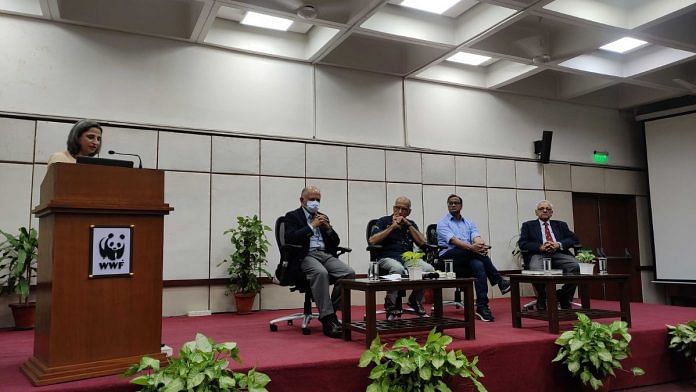New Delhi: Wildlife conservationist and historian Divyabhanusinh Chavda had no intentions of writing a book on cheetahs, let alone launching one. And yet, on a rainy Wednesday evening, he found himself in front of a small audience of dedicated wildlife enthusiasts doing just that.
In fact, The Story of India’s Cheetahs, which launched on 3 May at the World Wildlife Funds office in New Delhi, is Chavda’s second book on the topic, after End of the Trail: The Cheetah in India published in 1995 went through three printings.
“There is a remarkable Russian scholar who is researching in the Masai Mara on the cheetahs, and she contacted me through another friend of ours, during Covid-19 times. She said what are you doing? And I said I was doing very important, productive work assisting my wife with the dishes and sweeping the floor,” he said, as the audience laughed.
She suggested he rewrite his old book. What emerged was a richer story of cheetahs in India.
“I wasn’t doing much else except catching butterflies, and so I put pen to paper,” said Chavda.
Also read: From extinction to re-introduction: Brief history of Indian cheetah
India’s cheetah story
The Story of India’s Cheetahs took two years to finish, with contributions from scholars of Pali, Sanskrit, Urdu, Marathi, Arabic and many other languages. It traces the history of the cheetahs in the Indian subcontinent from pre-historic times till their extinction.
“The most exciting thing for me is that there was all this information that was virtually unknown,” Chavda said.
Published by the Marg Foundation, the book features a stunning painting on its cover – a family of cheetahs, the mother tending to her young children, lounging amid rocks and a long-limbed tree. As per the book, it is among the earliest paintings of cheetahs in the wild in India, attributed to Mughal artist Basawan in 1570.
The book comes at a time when the government is trying to bring
this picture back to life. It recently translocated 20 cheetahs from Africa, in what is considered to be the world’s largest conservation experiment for a large mammal. However, two cheetahs died in the process.
While Chavda does not attempt to predict whether the project will be a success or failure, but the “tortured” history of the cheetah’s survival in India suggests that revival will be a long-drawn out process, spanning several decades at least, he said.
According to renowned conservationist MK Ranjitsinh, who was part of the panel, the book is “the finest history of any species” that he has come across.
For one, it challenges the popular belief that the cheetahs went extinct in 1947, when Maharaja Ramanuj Pratap Singh Deo of the erstwhile Koreā princely state (in today’s Chhattisgarh, now spelt as Koriya) shot what is thought to be the last three.
Instead, the book records the last cheetah sighting in the Indian subcontinent in 1997, in Balochistan – “not 1947, not 1962, not 1972. This is the date, as far as I’m concerned, that is the most important.”
Vermin to grassland’s saviour
Mahesh Rangarajan, professor of Environmental Studies and History at Ashoka University, also spoke at the event, telling the audience how historically, the cheetah never had an advocate. They were bounty hunted and considered “vermin” during British rule, and never quite captured the popular imagination of Indians after.
“The 1960s transformed the tiger from being a trophy animal into a conservation icon. The lion in 1972 became the state animal of Gujarat. The cheetah didn’t find a place,” Rangarajan said, “the cheetah has become a bridge to widening that sense of consciousness – just as it happened with the tiger.”
For Ranjitsinh, Project Cheetah has the potential to revive what’s been chipped away at over centuries – India’s grassland savannas, home to a myriad other species that are endangered, some of them critically so, like the caracal. Mostly considered “wastelands” in India, grasslands are where cheetahs have thrived, among other ecosystems.
“The cheetah brings a number of things in its wake, as he’s highlighted in his book. It can shift the focus (of conservation) away from a single species to multiple species. Our grasslands must be saved with some kind of an icon. We are great worshippers of icons, and that must be utilised,” he said.



